

新品开箱 | RL78/G15开发板 Step by Step点灯
描述
前篇回顾
新品开箱 | RL78/G15开发板开箱与开发环境搭建
基于e2 studio点灯
新建工程
文件->新建->瑞萨C/C++项目->Renesas RL78
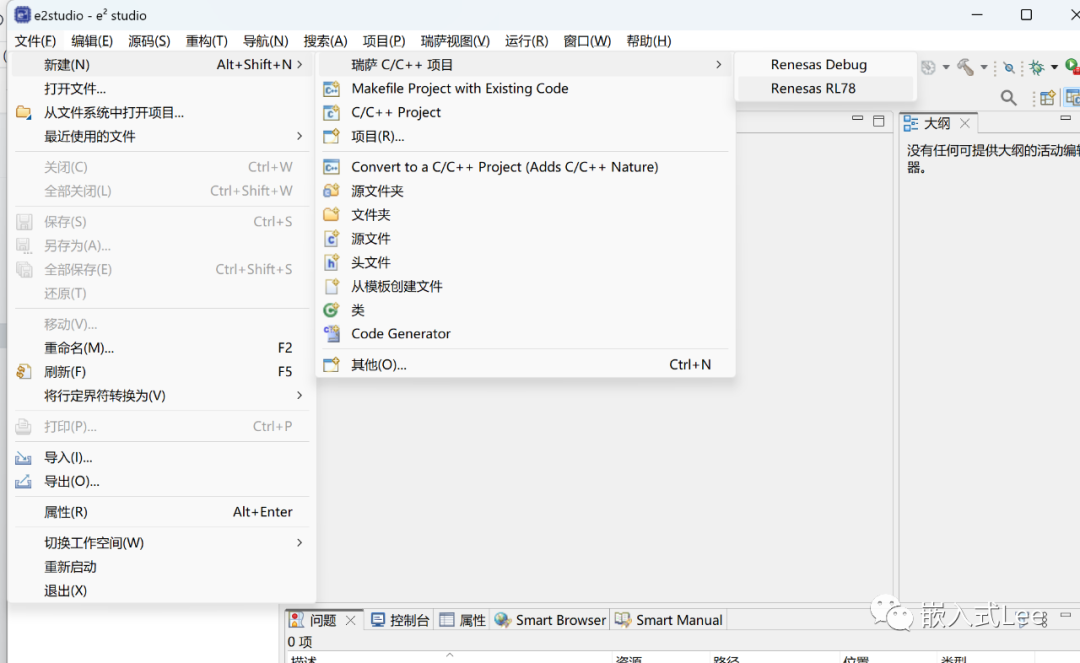
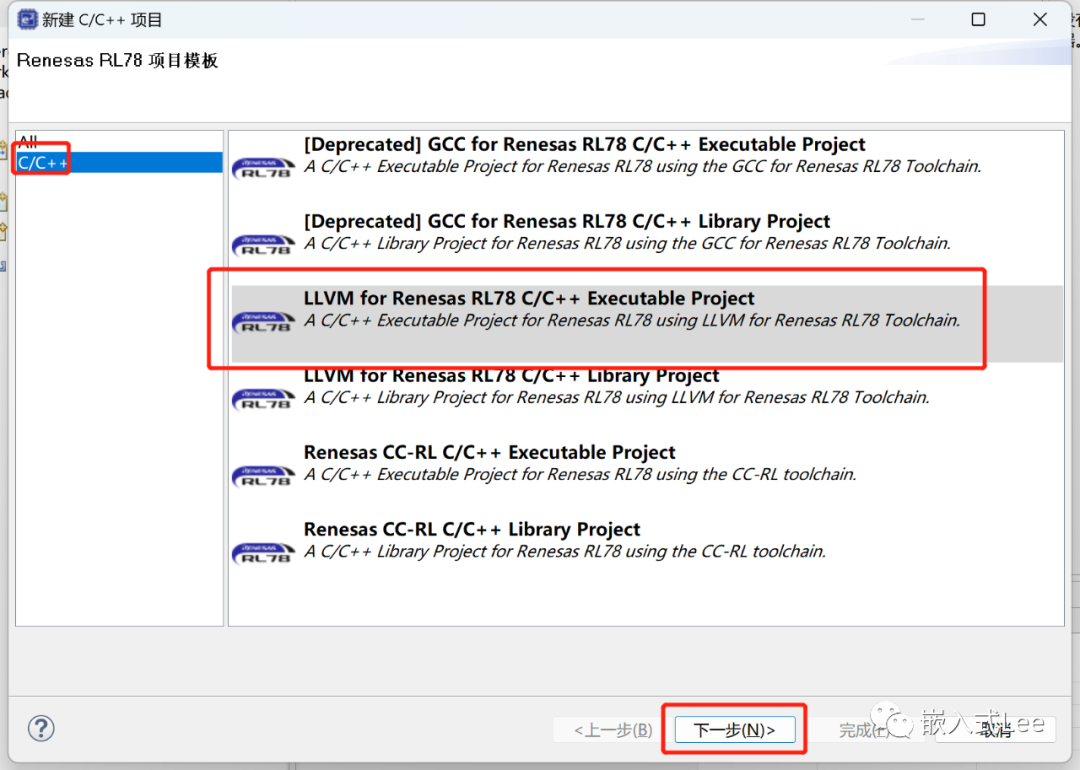
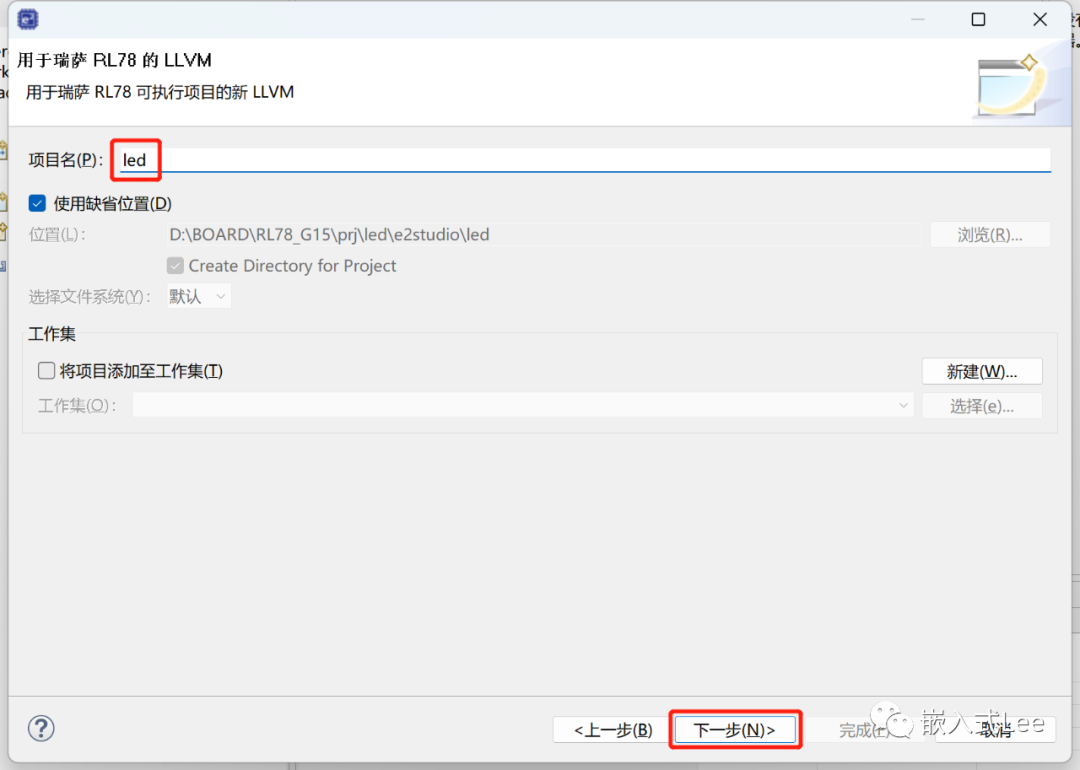

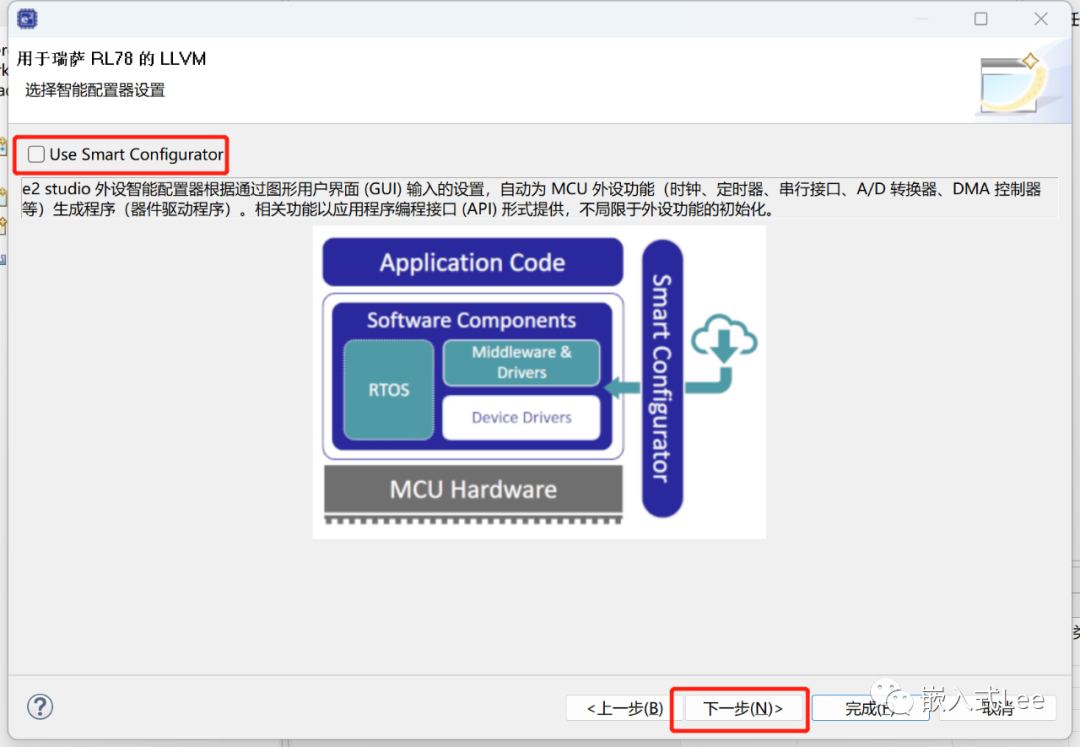
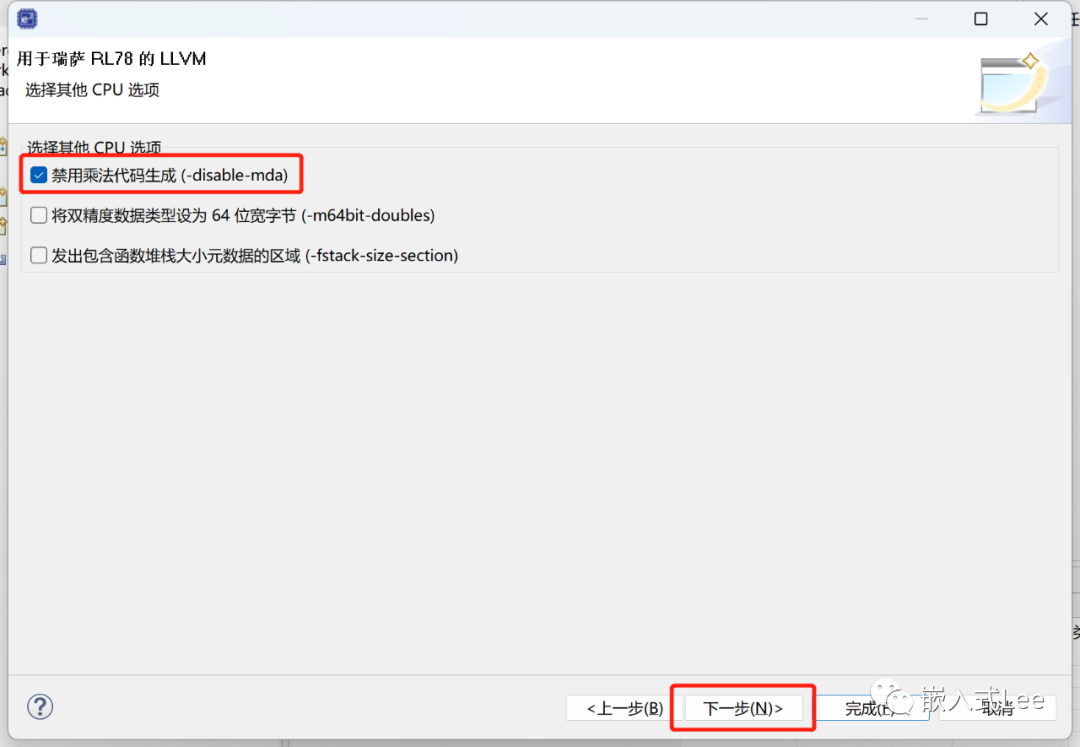
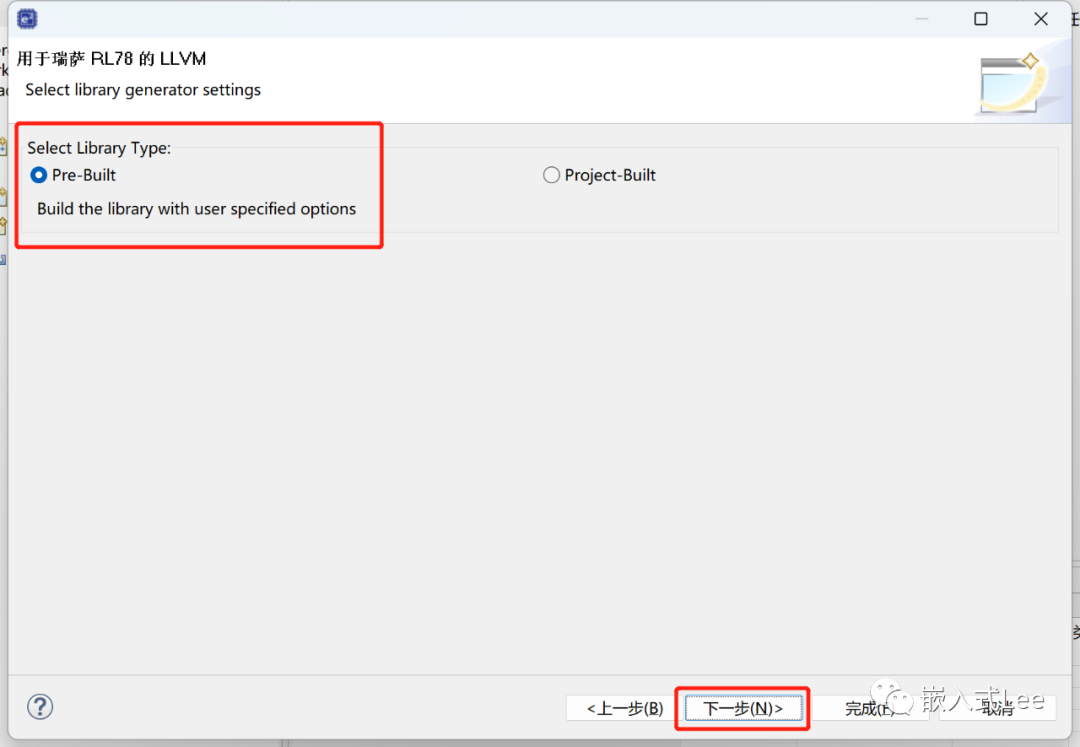
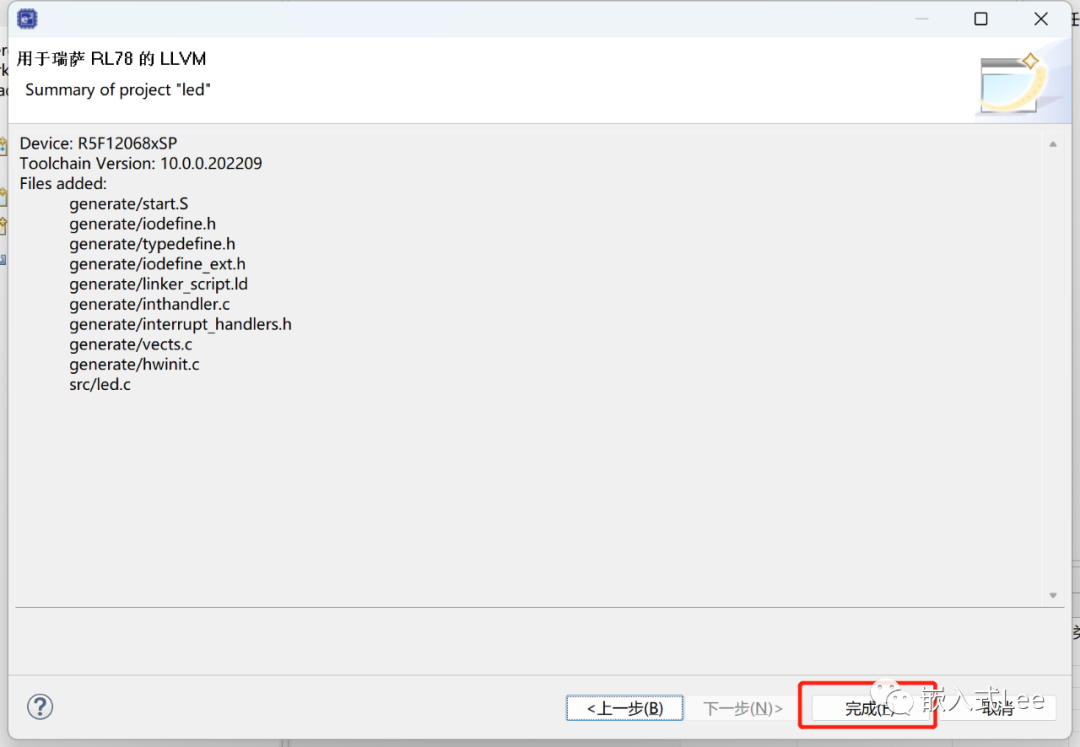
构建项目
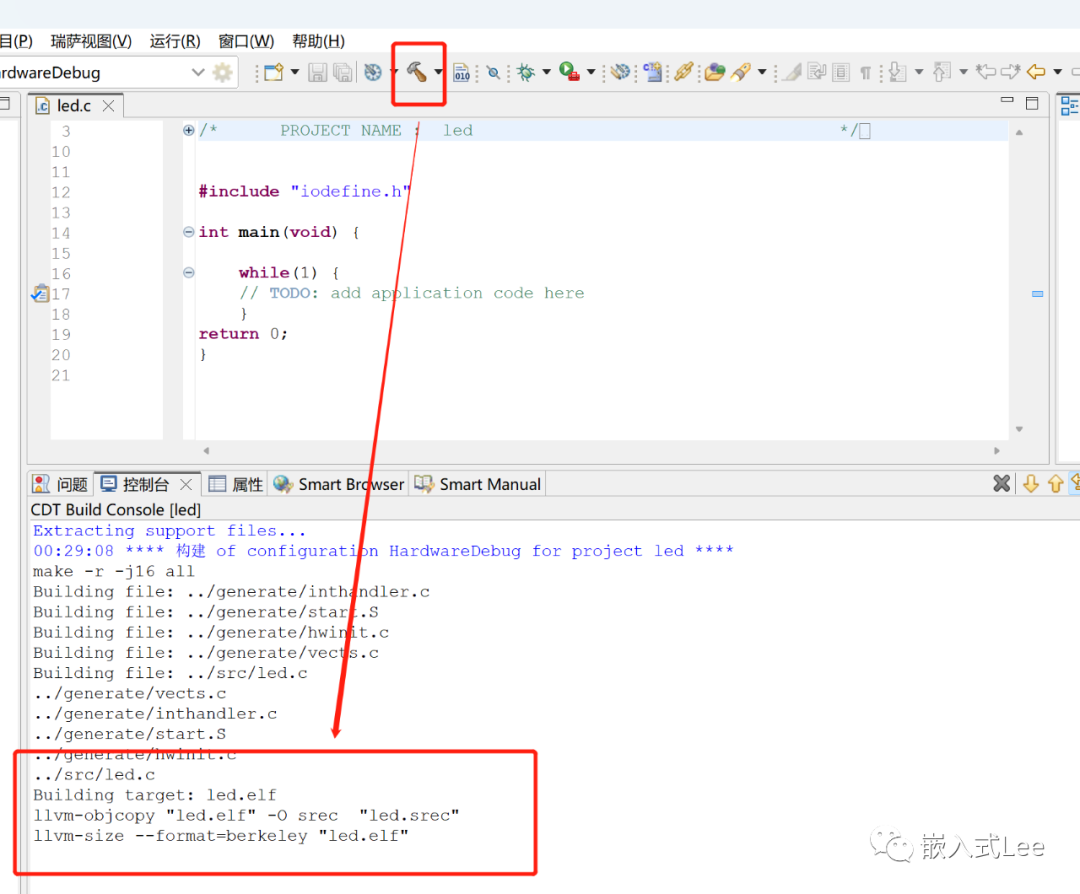
仿真配置
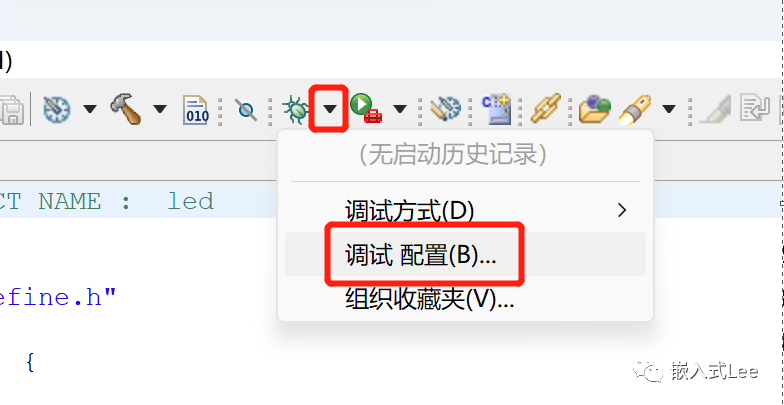
点开Renesas GDB Hardware Debug下的led Hardwaredebug

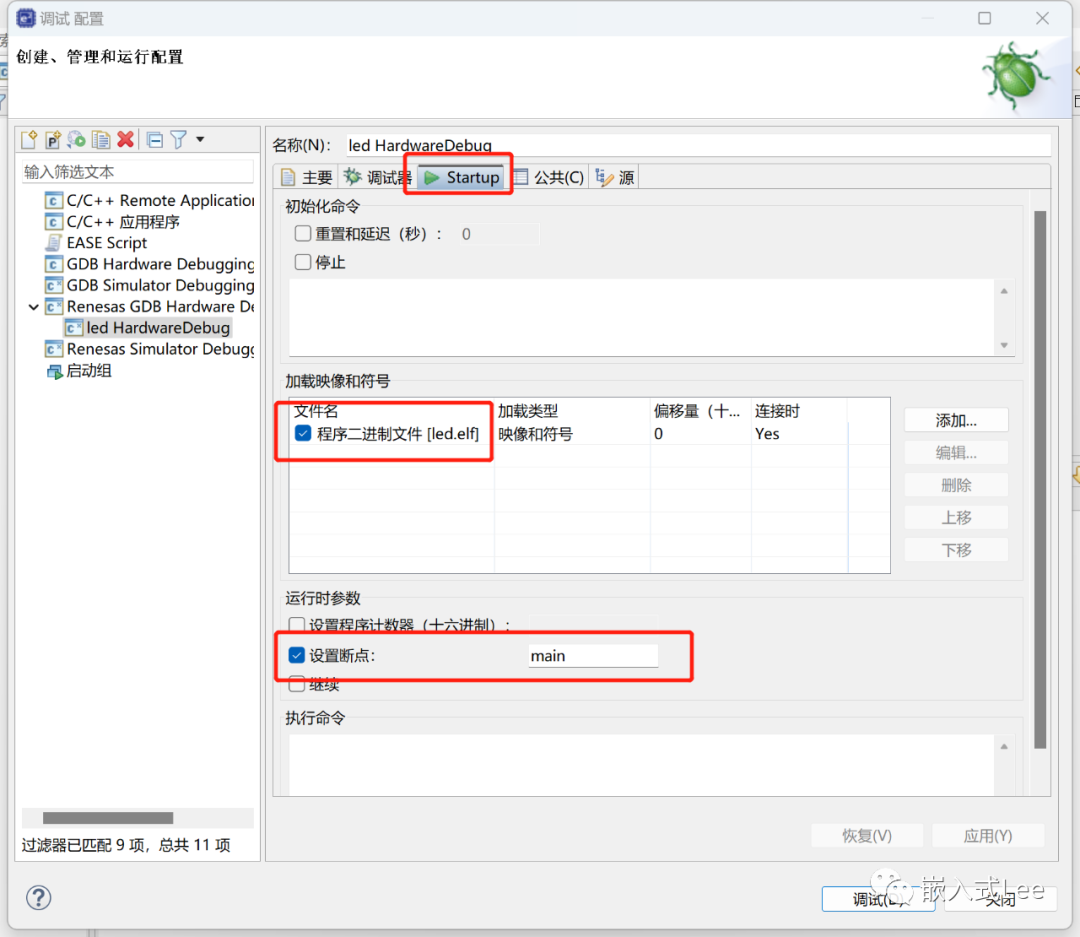
仿真器设置如下,点击调试
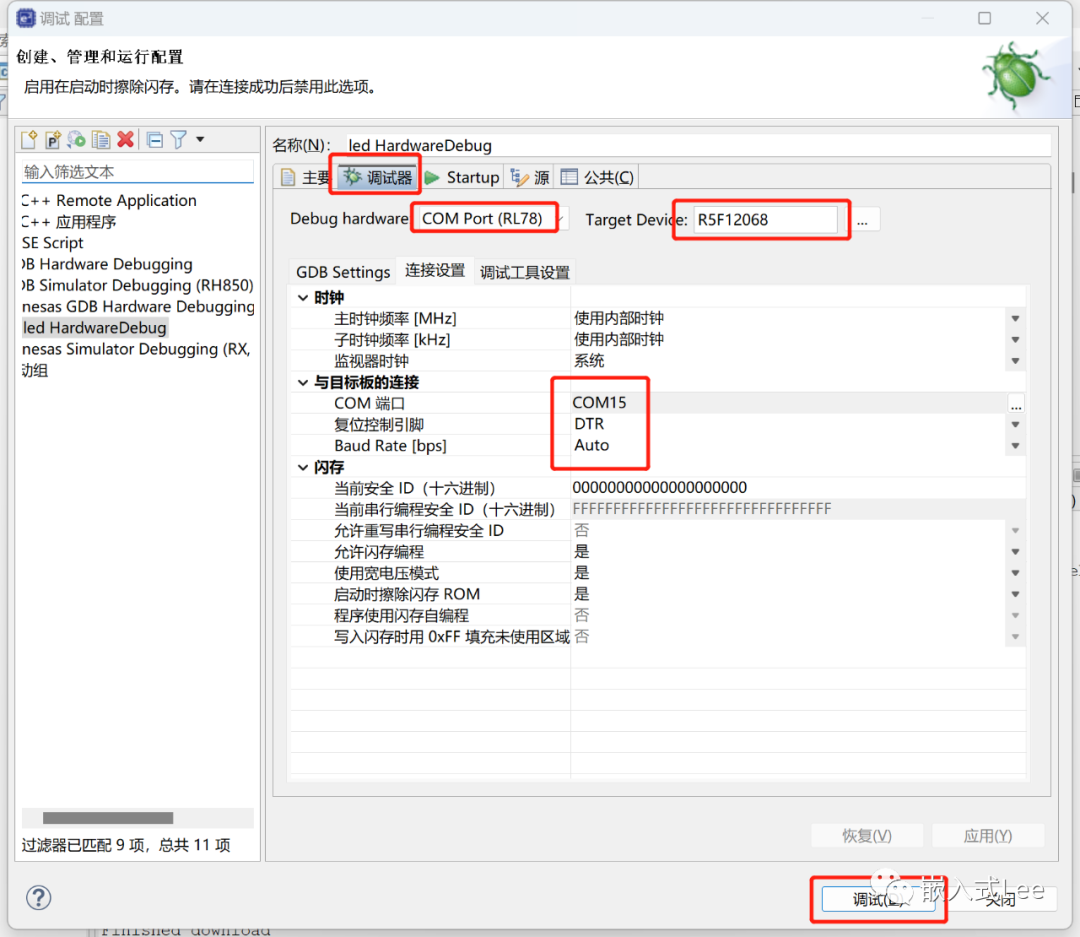

进入仿真环境如下
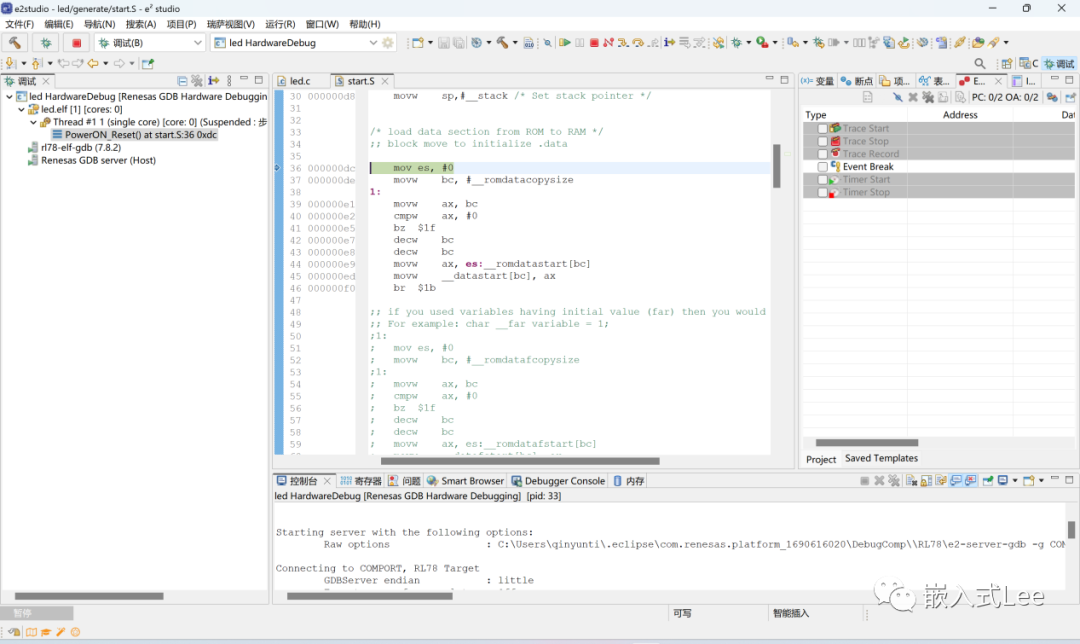
配置好后可以直接点击如下图标进入

参考《RL78/G15 Fast Prototyping Board User’s Manual》
IO点灯
从原理图可以看到P20和P21控制LED2和LED1,低点亮。
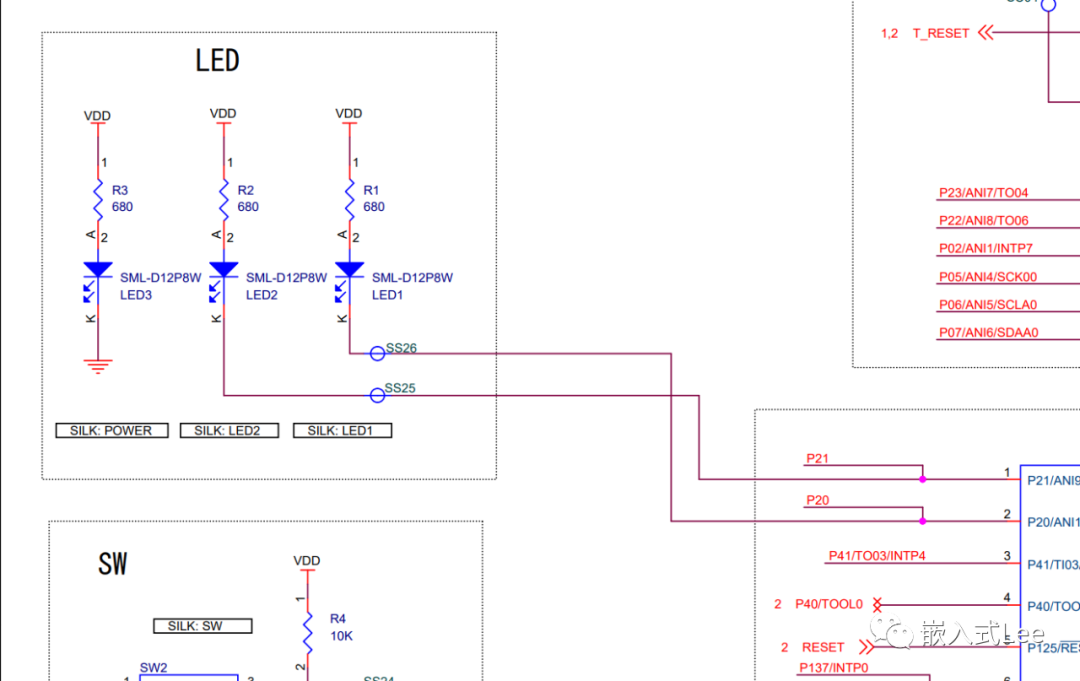
阅读《RL78/G15 User’s Manual: Hardware》的《CHAPTER 4 PORT FUNCTIONS》
和《CHAPTER 2 PIN FUNCTIONS》
寄存期
PM0/PM2/PM4/PM12:设置指定端口指定IO的输入输出,一个bit对应一个IO,0输出,1输入
P0, P2, P4, P12, P13: 输出或读指定端口的指定IO的状态,一个bit对应一个IO。
PU0, PU2, PU4, PU12:设置指定端口指定IO的上拉电阻是否使能,一个bit对应一个IO,1使能,0不使能。必须满足以下条件
● PMmn = 1 (Input mode)
● PMCmn = 0 (Digital I/O)
● POMmn = 0 (Normal output mode)
POM0, POM2, POM4:设置指定端口指定IO的输出模式,一个bit对应一个IO,0正常模式,1开漏输出
PMC0, PMC2:设置指定端口指定IO的模数模式,一个bit对应一个IO,0数字端口,1模拟端口
PIOR0 to PIOR3:外设功能重定向。
配置代码
寄存器定义位于
iodefine.h
iodefine_ext.h
led.c中包含该头文件即可
#include "iodefine.h"
#include "iodefine_ext.h"
代码如下
/***************************************************************/
/* */
/* PROJECT NAME : led */
/* FILE : led.c */
/* DESCRIPTION : Main Program */
/* */
/* This file was generated by e2 studio. */
/* */
/***************************************************************/
int led_init(void)
{
PM2 &= ~(1u<<0); /*P20 out*/
P2 |= (1u<<0); /*P20 out 1*/
PU2 &= ~(1u<<0); /*P20 On-chip pull-up resistor not connected */
POM2 &= ~(1u<<0); /*P20 Normal output mode */
PMC2&= ~(1u<<0); /*P20 Digital I/O (alternate function other than analog input */
PM2 &= ~(1u<<1); /*P21 out*/
P2 |= (1u<<1); /*P21 out 1*/
PU2 &= ~(1u<<1); /*P21 On-chip pull-up resistor not connected */
POM2 &= ~(1u<<1); /*P21 Normal output mode */
PMC2&= ~(1u<<1); /*P21 Digital I/O (alternate function other than analog input */
return 0;
}
int led_set(int id,int value)
{
switch(id)
{
case 0:
if(value)
{
P2 &= ~(1u<<0); /*Set P20 output to low,LED1 on*/
}
else
{
P2 |= (1u<<0); /*Set P20 output to hight,LED1 off*/
}
break;
case 1:
if(value)
{
P2 &= ~(1u<<1); /*Set P20 output to low,LED2 on*/
}
else
{
P2 |= (1u<<1); /*Set P21 output to hight,LED2 off */
}
break;
default:
break;
}
return 0;
}
int led_delay(int t)
{
volatile int cycle = 100;
for(int i=0; i{
cycle = 100;
while(cycle-- > 0);
}
return 0;
}
int main(void) {
led_init();
while(1) {
// TODO: add application code here
led_set(0,1);
led_set(1,1);
led_delay(100);
led_set(0,0);
led_set(1,0);
led_delay(100);
}
return 0;
};>
仿真调试
编译

下载

暂停在了复位代码处
运行
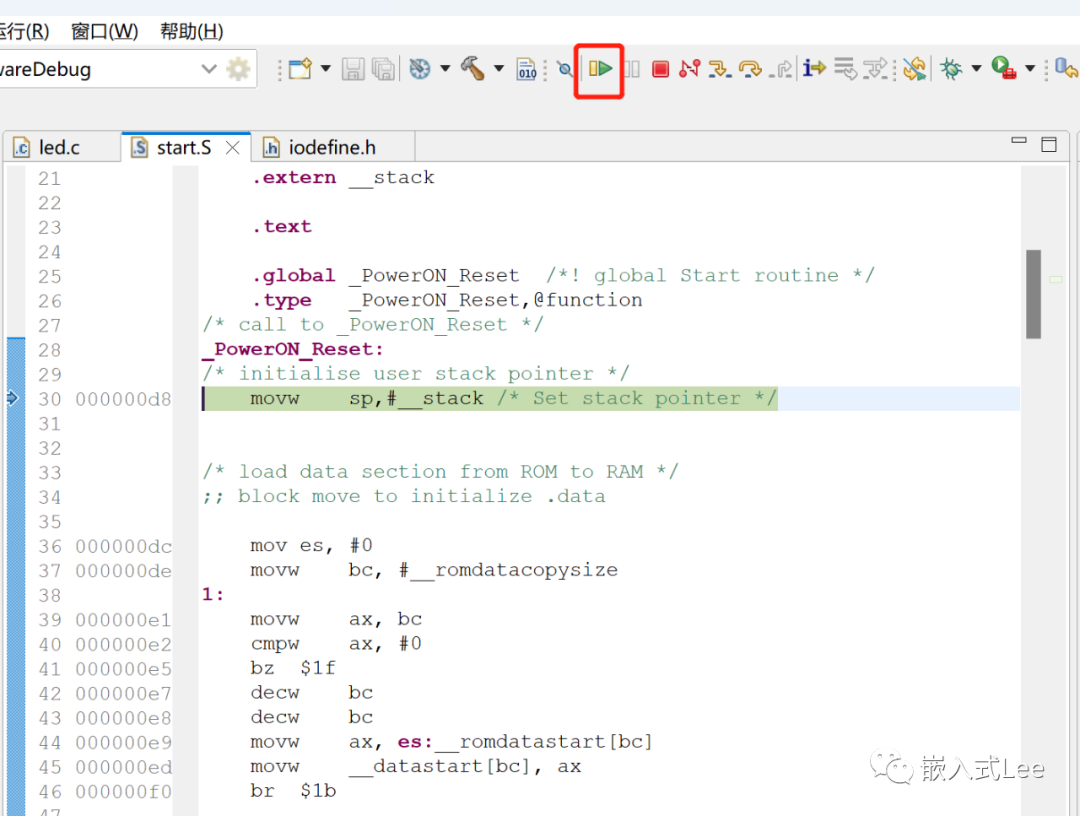
停在了main函数的断点处,继续运行
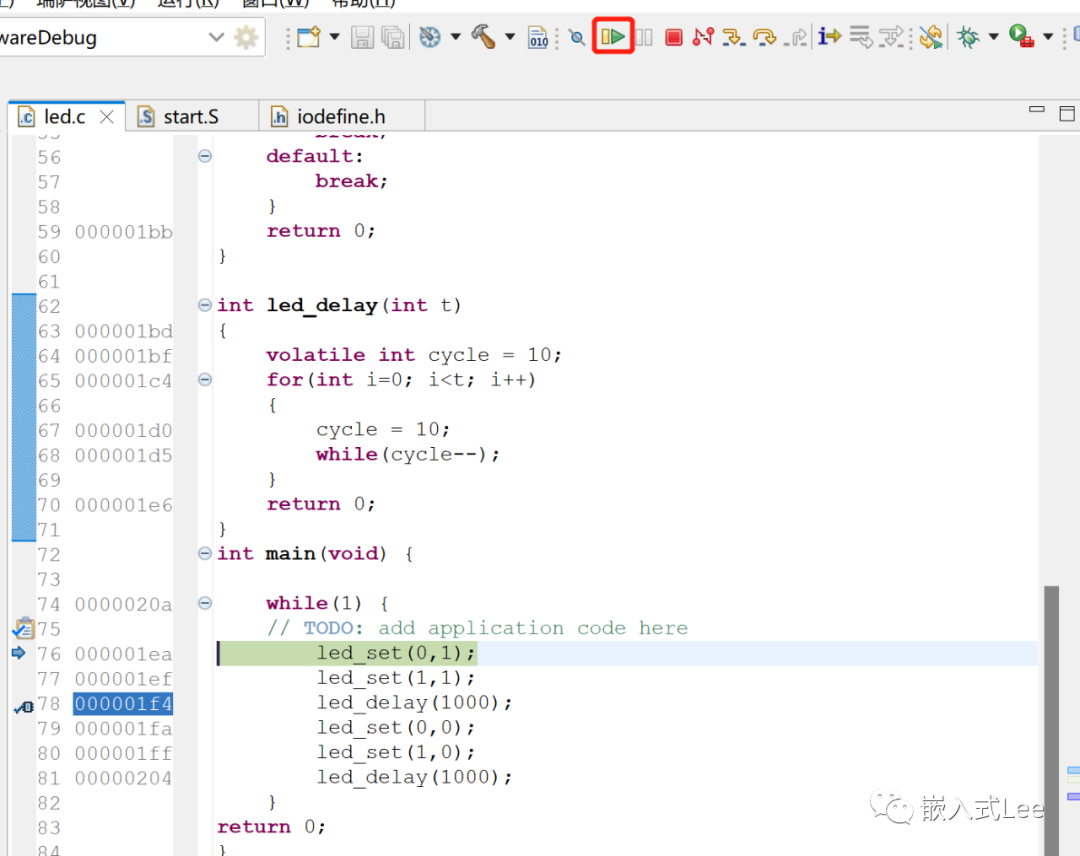
可以看到LED1和LED2闪烁
可以在指定位置双击打断点
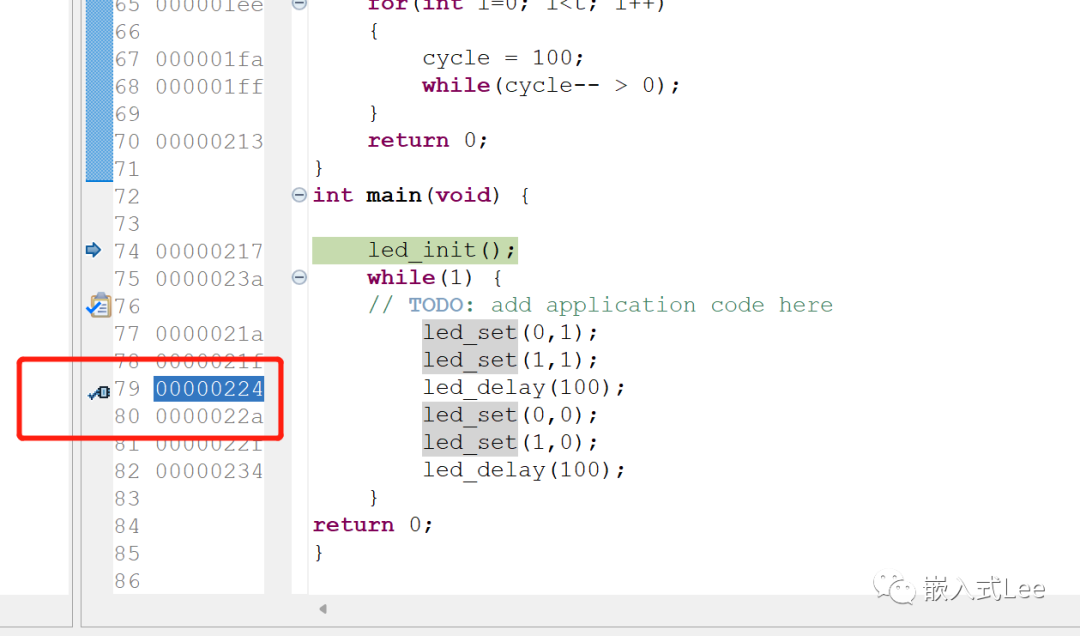
查看对应的寄存器
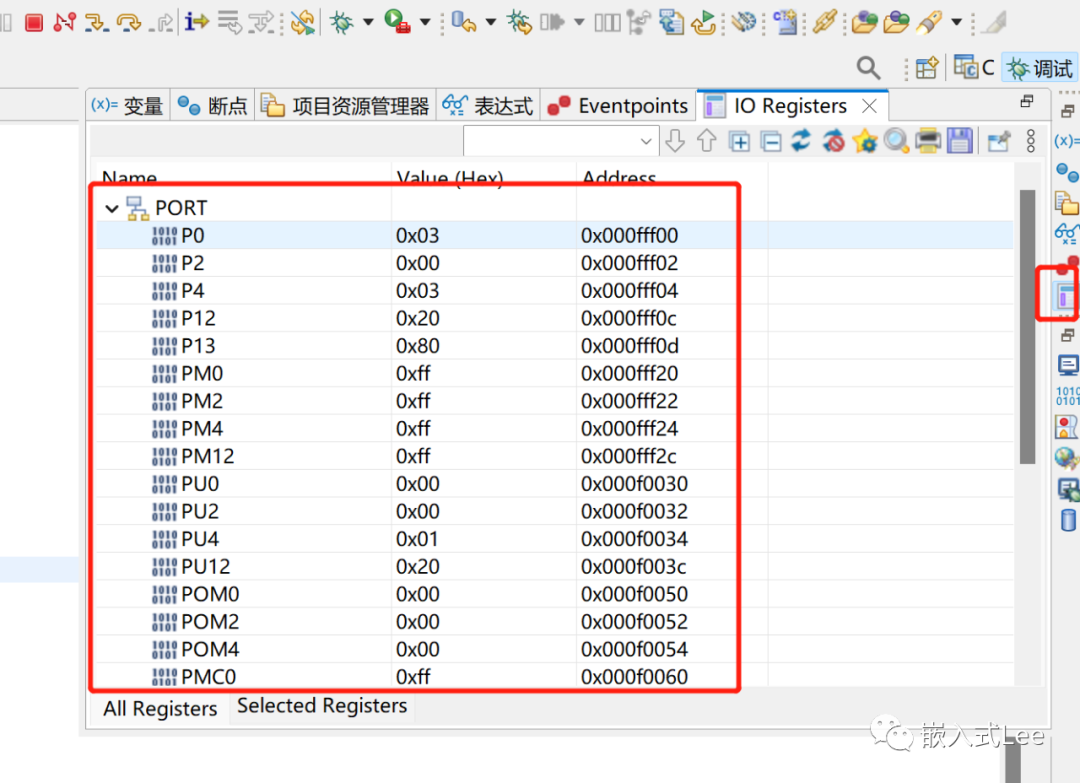
参考
开发板资源
https://www.renesas.cn/cn/zh/products/microcontrollers-microprocessors/rl78-low-power-8-16-bit-mcus/rtk5rlg150c00000bj-rl78g15-fast-prototyping-board
主要下载查看User's manual用户手册和Schematic原理图。
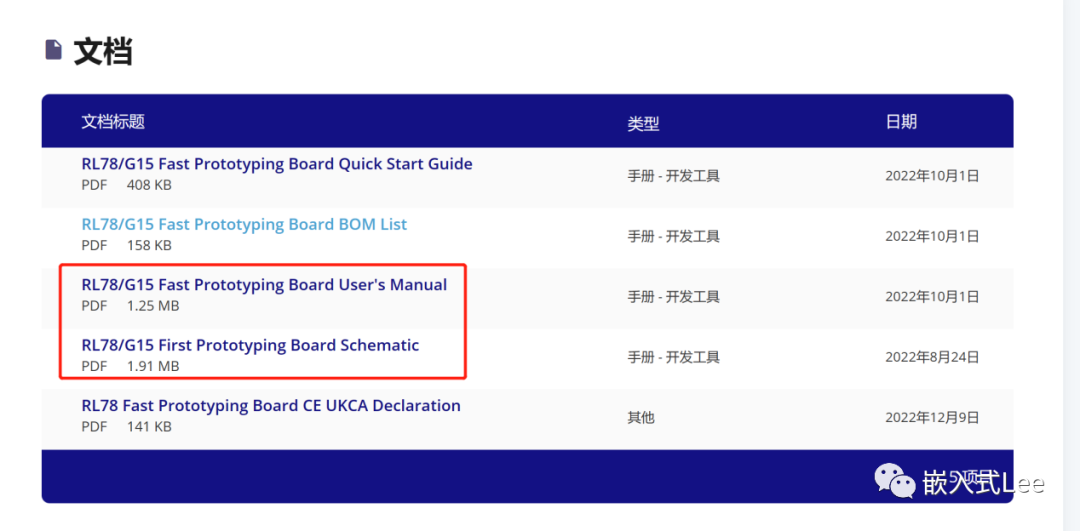
MCU资料
https://www.renesas.cn/cn/zh/products/microcontrollers-microprocessors/rl78-low-power-8-16-bit-mcus/rl78g15-compact-low-pin-count-microcontrollers-rich-peripheral-functions-general-purpose-applications
主要下载查看Datasheet数据手册和User’S Manual用户手册,编程主要参考后者,其他按需参考。
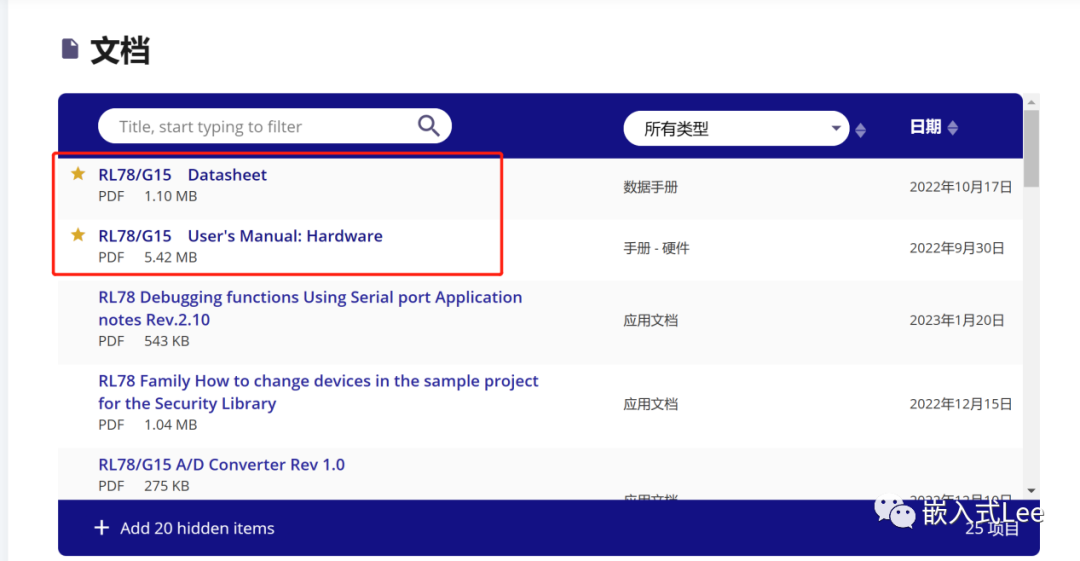
总结
以上step by step,介绍了RL78/G15开发板及其资源,搭建了开发环境并直接根据手册配置寄存器进行了点灯测试,介绍了仿真调试。入门RL78/G15开发,这一篇就够了。通过以上体验,总结如下:
1.开发板未提供MicroUSB线,最好能提供,这样开箱即可使用。
2.e2 studio基于eclipse整体而言入手比较简单。
3.板载调试器这一点非常方便。
4.官方开发文档资料非常详细。
5.还可以跑RTOS μITRON,不过这里还没试 参见https://www.renesas.cn/cn/zh/software-tool/ri78v4-v2-real-time-os-rl78-family。
6.封装小,适合各种低成本低功耗应用场景。
7.开发工具开发方式比较简单。
1
END
1
-
RL78/G15第一个原型板原理图2023-06-29 376
-
RL78/G15数据表2023-05-19 375
-
RL78/G15用户手册:硬件2023-05-12 421
-
新品开箱 | RL78/G15开发板开箱与开发环境搭建2023-03-16 2703
-
RL78/G15快速原型开发板(FPB)演示2023-03-10 1713
-
瑞萨RL78/G15针对8位MCU应用进行的优化2023-02-13 966
-
留言有奖 | RL78/G15新品解读【高精度、小空间、高温使用环境的理想选择】2023-01-13 1722
全部0条评论

快来发表一下你的评论吧 !


